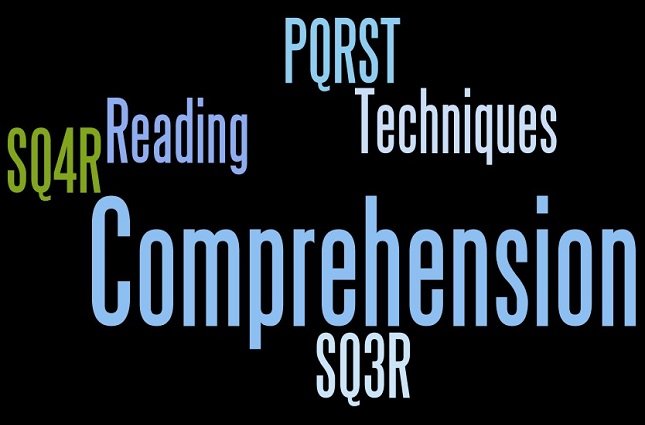'To tell a story and to be in a story are two different things and a writer must be aware of this'. I heard it from a writer and since then, I believe that understanding of the text at hand depends on how much involvement we create with the writer and the thought.
Comprehension of the text is possible when the writer allows the reader to understand and know the 'projected intentions' of the writer himself. If, I, as a writer or speaker don't want you to understand what I am saying, you will surely find nothing from my words. The same is the case with Reading Comprehension. We obey the opening rule while writing and try our best to be on the side of the reader. Consideration for the reader enables us to minimise gaps in writing and connecting the dots becomes more significant. The feeling of possessiveness requires to be checked while writing and needs to be developed while reading.
A reader should feel like the writer, as the writer is asked to stay out of the writing. We have been attempting 'Unseen Passages' or 'Reference to the Context' questions since our school age. There has been a lack of awareness and skills in us when we talk of comprehension task. We seldom respect the text assigned to us and never attempt to play the role of the writer. This doesn't suggest any obsession on the part of the reader but certainly recommends a sincere attempt to know what exactly the writer is up to.
We know unseen passage as a Passage/written piece of around 150-250 words or more, 5-10 questions and we are to answer them. A Standard Operating Procedure has been followed by many of us when we take hold of a pencil, read the questions asked and jump into the passage. We underline or mark the 'possible answers' and then, without any further respect, paste the sentences on the answer booklet pages. The work is done? No! A Lot more remains. Along with the grammatical concerns, meaning and expressive values are to be kept intact.
Complete Comprehension of the written piece is possible only when a concentrated reading is done. But, being in the age of competitiveness, reading has turned itself to ‘Smarter Ways’ from the harder ways. As we discussed Skimming and Scanning in another article, we realise that reading comprehension goes in sync with the ‘Purpose and Priority of Reading’. In examinations, the candidates are to give an objective understanding within the short span of time given. The generalised ways have turned into standardized methods and techniques.
The most famous and commonly implemented method of attempting a task/question on Reading Comprehension is:
SQ3R Method
Survey-Question-Read-Recite-Review
Survey:
A helicopter view is taken by the reader and this gives an idea of the vocabulary, style and suggested message in the write-up. However, this survey does not provide a perfect insight into the intentions of the writer (mostly unknown/not mentioned). This Survey is of the Text-Questions and Reinforced/Repeated expressions in sentences. This ‘Surveying’ also enables the reader to decide the purpose of reading and approach of understanding. This scanning of the canvas gives us a frequency to work with.
The survey can be divided into two segments according to its functioning: Textbook Survey and Assignment Survey. The former is when we go through the Content Page, Glossary, Index Page and Illustrations etc. and frame questions for which we attempt to find answers. In the Assignment type, we are more into extensive reading. At the start of a study session, we survey in more detail the material we will be reading. The reading in this goes chapter wise and we make notes to make answers to the questions we had prepared as ‘objective of reading’.
Question: Questions create interest and make us active learners. The readers must think as to what are the ‘Intentions’ of the writer who has not been mentioned to them. The Questions given in the passage are to read and a framework of the search operation is being built through this. We should be able to categorize the questions into open-ended, closed-ended, point of view based/reasoning, grammatical, or asking for a title to the passage etc.
Read: Reading is the core of comprehension and the reader attempts to rule to the text in this step. From the first word to the concluding one, we read all. Skimming and Scanning may not be suggested here as it is ‘evaluated for comprehensive understanding’ of the passage. Being free from the context and main text, the reader finds it difficult to relate to the communicated intentions. The Style of writing, vocabulary, and grammar also helps in understanding the text. A thorough reading is done and we mark the segments where the answers are ‘probably located’.
Recite: When we re-tell the responses that we have selected, we take it as Recite. It is recited to the reader himself, confirming the correctness of the selected responses.
Review: After SURVEY-QUESTION-READ-RECITE, Review brings the conclusion of the comprehension exercise. It stands to verify that all have been placed in order and there are no possible gaps between the questions-answers and the text comprehended.


